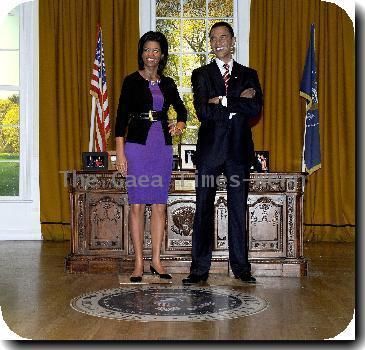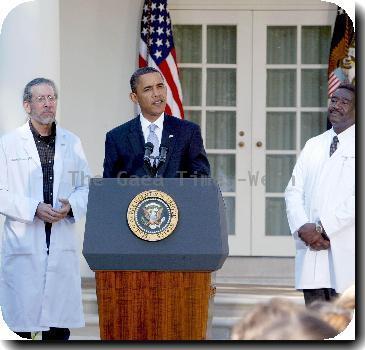Government declares Gulf seafood safe after spill, but even some fishermen aren’t so sure
By Jason Dearen, APMonday, August 2, 2010
Gulf seafood declared safe; fishermen not so sure
VENICE, La. — Seafood from some parts of the oil-fouled Gulf of Mexico has been declared safe to eat by the government, based in part on human smell tests. But even some Gulf fishermen are questioning whether the fish and shrimp are OK to feed to their own families.
Some are turning up their noses at the smell tests — in which inspectors sniff seafood for chemical odors — and are demanding more thorough testing to reassure the buying public about the effects of the oil and the dispersants used to fight the slick.
“If I put fish in a barrel of water and poured oil and Dove detergent over that, and mixed it up, would you eat that fish?” asked Rusty Graybill, an oysterman and shrimp and crab fisherman from Louisiana’s St. Bernard Parish. “I wouldn’t feed it to you or my family. I’m afraid someone’s going to get sick.”
Now that a temporary cap has kept oil from spewing out of BP’s blown-out well for more than two weeks, state-controlled fishing areas in Louisiana, Florida and Mississippi have slowly begun to reopen.
Despite splotches of chocolate-colored crude that wash up almost daily on protective boom and in marshes east of the Mississippi River, Louisiana has reopened those waters to fishing for such finfish varieties as redfish, mullet and speckled trout, and will allow shrimping when the season begins in two weeks. Oysters and blue crabs, which retain contaminants longer, are still off-limits.
Smell tests on dozens of specimens from the area revealed barely detectable traces of toxic substances, the Food and Drug Administration said. The state of Louisiana has also been testing fish tissue for oil since May and has not found it in amounts considered unsafe.
In Mississippi on Monday, FDA Commissioner Dr. Margaret Hamburg said the government is “confident all appropriate steps have been taken to ensure that seafood harvested from the waters being opened today is safe and that Gulf seafood lovers everywhere can be confident eating and enjoying the fish and shrimp that will be coming out of this area.”
Similarly, BP chief operating officer Doug Suttles said Sunday that authorities “wouldn’t open these waters … if it wasn’t safe to eat the fish.” He said he would eat Gulf seafood and “serve it to my family.”
Experts say smell tests may sound silly but are a proven technique that saves time and money. Moreover, they are the only way to check fish for chemical dispersants, though FDA spokeswoman Meghan Scott said government scientists are developing a tissue test. It is not clear when it will be ready.
Federal scientists say that unlike mercury, which accumulates in some fish, the most common cancer-causing compounds in oil are quickly metabolized and eliminated in the bodies of finfish and some crustaceans.
The FDA has declined repeated requests to provide information about the toxic substances that were found, but the agency is mostly looking for polycyclic aromatic hydrocarbons, or PAHs, which have been linked to cancer. The compound is found in many foods, such as corn oil, kale and smoked meats. Scientists studying the 1989 Exxon Valdez spill in Alaska found that the villagers’ own smoked fish contained levels of the contaminant hundreds of times higher than those found in the shellfish tainted by the oil spill.
As for the dispersants, the Environmental Protection Agency said the ones used in the Gulf have low toxicity in humans, meaning the public health risk is low.
Ralph Portier, an aquatic toxicologist at Louisiana State University, said that all the data and testing he has reviewed so far show that seafood caught in the recently reopened areas of the Gulf is safe, and he would feel comfortable eating it. President Barack Obama ate Gulf seafood when he visited Mississippi a few weeks ago.
“The major theme here should be that we have no indication that there’s a problem. We have not seen dispersant or the telltale signs of oil in finfish and shrimp,” Portier said.
But his colleague Kevin Kleinow, a professor of aquatic toxicology, said he is laying off Gulf seafood until the government releases more specifics about the testing it conducted, including exactly what species are being monitored and what levels of toxic substances are being found.
He said he is also concerned that a smell test won’t sniff out dispersants. “Some of them — we’ve done work on a number of surfactants that are used in dispersants — have very little odor,” he said.
Louisiana Gov. Bobby Jindal called on BP on Monday to fund a 20-year testing and certification program to restore confidence in seafood from the Gulf, which accounts for a majority of the domestic shrimp and oysters eaten by Americans and about 2 percent of overall U.S. seafood consumption.
“This will be the most monitored, safest seafood you will get anywhere in the world,” Jindal said. The initial cost of his plan would be $173 million over five years, and it would require that three criteria for seafood be met in that time, including that tissue samples from fish show no signs of oil from the spill.
“If these conditions are not met by the end of the fifth year, BP should fund an additional three years of the project,” said Kyle Plotkin, the governor’s spokesman.
BP did not immediately return a call for comment.
Dawn Nunez, whose family operates a shrimp wholesale business in Louisiana, said he finds it absurd that the government is reopening the fishing grounds when so many doubts linger.
“It’s nothing but a PR move,” she said. “It’s going to take years to know what damage they’ve done. It’s just killed us all.”
Not everyone is concerned.
Andrew Hunt, a real estate agent who lives in Meraux, La., motored his small recreational fishing boat out to the newly opened area of marsh and reeled in a foot-long speckled trout.
“We’ll go and have us a nice little fish fry,” he said.
Bluestein reported from New Orleans. Associated Press Writer Harry R. Weber contributed to this report.
On the Web: www.fda.gov/Food/ucm217601.htm
Tags: Accidents, Barack Obama, Environmental Concerns, Louisiana, Mississippi, North America, United States, Venice



